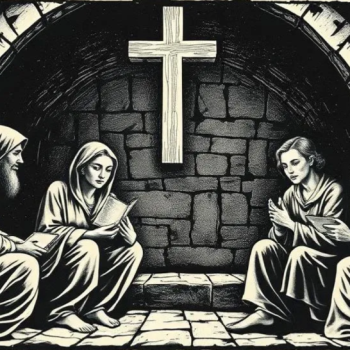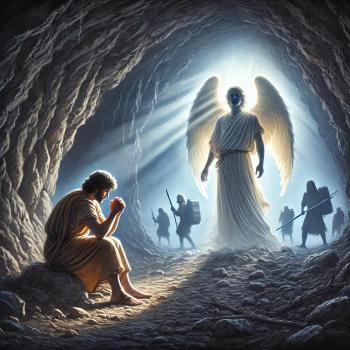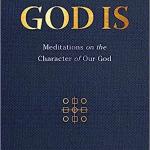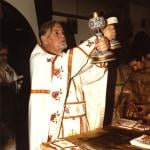1 Peter 1:22-2:10 Church Screenshots
Church Screenshot #1: We are children of the same family (1:22-2:3)
We have experienced the same birth
“since you have been born again —not of perishable seed but of imperishable—through the living and enduring word of God. For All flesh is like grass, and all its glory like a flower of the grass. The grass withers, and the flower falls, but the word of the Lord endures forever. And this is the word that was preached as the gospel to you.” (1 Peter 1:23–25, HCSB)
We are all born again. There is first a physical seed which gives way to a physical body. Then there is a spiritual seed which gives way to a spiritual body. The physical seed eventually grows and then dies. The spiritual seed – “imperishable” – will produce life which lasts forever. The phrase “incorruptible seed” is a Greek term that speaks of sperm. This should not be surprising, for by definition, any living thing has the capability to reproduce itself. The Word of God is no exception, for by it we are born again.1 The birth was aided by two assistants: The Word of the Lord and the preaching of the Gospel.
We express the same love
“By obedience to the truth, having purified yourselves for sincere love of the brothers, love one another earnestly from a pure heart,” (1 Peter 1:22, HCSB)
As a church family, we obey the Gospel. One of the ways to do that is to grow in love. The word “have purified yourselves” is the idea of consecration – of having been set apart (that is the idea, rather than purification) by their obedience to the gospel.2 The way a Christian is purified, consecrated, and set apart is by love. Christians love in two different ways. The first, “love of the brethren” (Greek, philadelphia), originally denoted love between blood brothers. Here it is love between brothers by grace. The second word for love (in the expression “love one another”) denotes a love which counts no sacrifice too great for the one loved.3 So we have the friendship love of philadelphia, and the sacrificial love of agape. The two different ways we can express love in the church.
The reason that we can enjoy this love is because of the promise of God.
“For All flesh is like grass, and all its glory like a flower of the grass. The grass withers, and the flower falls, but the word of the Lord endures forever. And this is the word that was preached as the gospel to you.” (1 Peter 1:24–25, HCSB)
At one level, Peter is applying Isa. 40:6–8 to his own readers in a direct fashion, for their circumstances are remarkably similar to those to whom Isa. 40 was designed to bring comfort. The Christians in Peter’s time are experience persecution and exile, in a similar fashion as the Jews in the Babylonian exile. Precisely because God’s word is reliable, Peter’s readers can rest assured that the fulfillment that has not yet taken place will come.4 The Word of God will endure forever, and so will love. We should not be surprised. For if God is love, and if God is eternal, so must love be eternal. Love never comes to an end (1 Corinthians 13:8). Love goes on forever (1 Corinthians 13:13).
We enjoy the same nourishment
“So rid yourselves of all malice, all deceit, hypocrisy, envy, and all slander. Like newborn infants, desire the pure spiritual milk, so that you may grow by it for your salvation, since you have tasted that the Lord is good.” (1 Peter 2:1–3, HCSB)
Mark Twain is quoted as saying, “Most people are bothered by those passages in the Bible which they cannot understand; but as for me, I always notice that the passages in the Scripture which trouble me the most are those which I do understand.” His statement is a commentary of this passage.5
ENJOYING THE TASTE OF GOD
There are three commands here for Christians. In essence, three steps to getting nourished by the Word of God. If I am going to “enjoy” the taste of God, then I need to do the following:
Stop eating bad food (“lay aside evil”)
Start eating good food (“desire pure spiritual milk”)
Continue to grow with a healthy diet (“so that you may grow by it for your salvation”)
The Christian who tries to find satisfaction in the husks of the world, has no appetite left for the things of God. His heart is filled with the former and has no room for the latter. A healthy infant is a hungry infant. A spiritually healthy Christian is a hungry Christian.6
Church Screenshot #2: We are stones in the same building (2:4-8)
“Coming to Him, a living stone—rejected by men but chosen and valuable to God—” (1 Peter 2:4, HCSB)
God has called us to the life of building, not destroying. After Peter has instructed us to rid ourselves of evil and to grow up in our salvation, he proceeds to tell us how to do that. After using the analogy of a baby who craves for milk, he now uses an analogy which is used frequently in the New Testament to illustrate the personal growth in one’s spiritual life, or the building up of the body of Christ—the church. It is the analogy of building a house.7
When Jesus first described the church, He compared it to a building.
“And I also say to you that you are Peter, and on this rock I will build My church, and the forces of Hades will not overpower it.” (Matthew 16:18, HCSB)
A contractor in Michigan was building a house and the construction of the first floor went smoothly. But when they started on the second floor, they had nothing but trouble. None of the materials from the lumberyard would fit properly. Then they discovered the reason: they were working with two different sets of blueprints! Once they got rid of the old set, everything went well and they built a lovely house.Too often, Christians hinder the building of the church because they are following the wrong plans. When Solomon built his temple, his workmen followed the plans so carefully that everything fit together on the construction site (1 Kings 6:7). If all of us would follow God’s blueprints given in His Word, we would be able to work together without discord and build His church for His glory.8
“For it is contained in Scripture: Look! I lay a stone in Zion, a chosen and honored cornerstone, and the one who believes in Him will never be put to shame!” (1 Peter 2:6, HCSB)
“built on the foundation of the apostles and prophets, with Christ Jesus Himself as the cornerstone.” (Ephesians 2:20, HCSB)
The word refers to a stone lying at the extreme corner, and this one stone controls the foundation lines of the building. Those who believe on the Stone will not be shamed or disappointed due to a failure on the part of the Stone; the Stone will never fail them.9
Jesus is the cornerstone. He is the basis for the church. He is also the chosen one – the One chosen by God. God doesn’t have just an elect people. God chose One person to make the people elect.
“Therefore the Lord God said: “Look, I have laid a stone in Zion, a tested stone, a precious cornerstone, a sure foundation; the one who believes will be unshakable.” (Isaiah 28:16, HCSB)
Jesus is also the precious One. Just as Golem longs after the precious Ring in the Lord of the Rings, God longs and praises His precious Son.
“He will be a sanctuary; but for the two houses of Israel, He will be a stone to stumble over and a rock to trip over, and a trap and a snare to the inhabitants of Jerusalem.” (Isaiah 8:14, HCSB)
“For it is contained in Scripture: Look! I lay a stone in Zion, a chosen and honored cornerstone, and the one who believes in Him will never be put to shame! So honor will come to you who believe, but for the unbelieving, The stone that the builders rejected— this One has become the cornerstone,” (1 Peter 2:6–7, HCSB)
People have a choice with Jesus. Either you will accept Him, or you will reject Him. To those who accept Jesus, He will be a sanctuary. To those who reject Him, He will be a stumbling block and a trap.
“and A stone to stumble over, and a rock to trip over. They stumble because they disobey the message; they were destined for this.” (1 Peter 2:8, HCSB)
Church Screenshot #3: We are priests in the same temple (2:5,9)
“you yourselves, as living stones, are being built into a spiritual house for a holy priesthood to offer spiritual sacrifices acceptable to God through Jesus Christ.” (1 Peter 2:5, HCSB)
It is fitting for Peter to use the analogy of the living stones since Jesus had called him Cephas, which means “a stone” (John 1:42). And it was to Peter that Jesus said, “You are Peter, and on this rock I will build My church, and the gates of Hades shall not prevail against it” (Matt. 16:18). And Peter was the human instrument, the rock, that Jesus used to lay the foundation for His church. Peter was filled with the Holy Spirit at Pentecost and preached in the streets of Jerusalem on the day of the birth of the church with some three thousand coming to faith in Christ on that very day (Acts 2:1–41).10
“But you are a chosen race, a royal priesthood, a holy nation, a people for His possession, so that you may proclaim the praises of the One who called you out of darkness into His marvelous light.” (1 Peter 2:9, HCSB)
The word “peculiar” today usually means “odd, strange.” But it is not so used here. The Greek word speaks of the unique, private, personal ownership of the saints by God.11
Church Screenshot #4: We are citizens of the same nation (2:9-10)
“But you are a chosen race, a royal priesthood, a holy nation, a people for His possession, so that you may proclaim the praises of the One who called you out of darkness into His marvelous light. Once you were not a people, but now you are God’s people; you had not received mercy, but now you have received mercy.” (1 Peter 2:9–10, HCSB)
1 Peter 2:10 reflects back the Old Testament prophet Hosea.
“She conceived again and gave birth to a daughter, and the Lord said to him: Name her No Compassion, for I will no longer have compassion on the house of Israel. I will certainly take them away.” (Hosea 1:6, HCSB)
“Then the Lord said: Name him Not My People, for you are not My people, and I will not be your God.” (Hosea 1:9, HCSB)
To the prophet Hosea, God tells Him that God’s people are not His people and He will not have compassion on them. Peter reverses this trend. In Hosea, the reason was because the people rejected God. Here, Peter is reassuring Christians that God will not reject them.
As Arnold Fruchtenbaum notes: This is a favorite passage for those who teach Replacement Theology. They teach that what the Old Testament stated to be true of Israel, Peter now applies and states to be true of the Church. Thus, they conclude that the Church has replaced Israel. However, there is no hint in the epistle that Peter is addressing the Church as a whole. On the contrary, in the epistle’s introduction (1:1–2), he stated that he was addressing Jewish believers who specifically comprised what was the then Remnant of Israel—the Israel of God. It is important to recognize that the contrast Peter makes here is not between the Church and Israel, or between believers and non-believers, or between unbelieving Jews and believing Gentiles. Rather, the contrast here is between the Remnant and the Non-Remnant of Israel. Peter’s point is that while Israel the whole failed to fulfill its calling, the Remnant of Israel has not failed to fulfill its calling.12
So do these verses apply to us as Christians? While the original context is for Jewish believers, the verses apply to the entire church as a group as well. We may not be a nation, but other verses teach that we are a royal priesthood, that we are chosen, and that we are holy. The church did not replace Israel. God still has a timeline for Israel. That is the point of Daniel 9:27. At the same time, God is still giving us as the church a continual chance to reach everyone – even Jews – for the Gospel.
1 Jon Courson, Jon Courson’s Application Commentary (Nashville, TN: Thomas Nelson, 2003), 1550.
2 G. K. Beale and D. A. Carson, Commentary on the New Testament Use of the Old Testament (Grand Rapids, MI; Nottingham, UK: Baker Academic; Apollos, 2007), 1019.
3 Curtis Vaughan, “1 Peter,” in The Teacher’s Bible Commentary, ed. H. Franklin Paschall and Herschel H. Hobbs (Nashville: Broadman and Holman Publishers, 1972), 786.
4 G. K. Beale and D. A. Carson, Commentary on the New Testament Use of the Old Testament (Grand Rapids, MI; Nottingham, UK: Baker Academic; Apollos, 2007), 1022.
5 Paul A. Cedar and Lloyd J. Ogilvie, James / 1 & 2 Peter / Jude, vol. 34, The Preacher’s Commentary Series (Nashville, TN: Thomas Nelson Inc, 1984), 131–134.
6 Kenneth S. Wuest, Wuest’s Word Studies from the Greek New Testament: For the English Reader (Grand Rapids: Eerdmans, 1997), 1 Pe 2:2.
7 Paul A. Cedar and Lloyd J. Ogilvie, James / 1 & 2 Peter / Jude, vol. 34, The Preacher’s Commentary Series (Nashville, TN: Thomas Nelson Inc, 1984), 136–137.
8 Warren W. Wiersbe, The Bible Exposition Commentary, vol. 2 (Wheaton, IL: Victor Books, 1996), 401.
9 Arnold G. Fruchtenbaum, The Messianic Jewish Epistles: Hebrews, James, First Peter, Second Peter, Jude, 1st ed. (Tustin, CA: Ariel Ministries, 2005), 341.
10 Paul A. Cedar and Lloyd J. Ogilvie, James / 1 & 2 Peter / Jude, vol. 34, The Preacher’s Commentary Series (Nashville, TN: Thomas Nelson Inc, 1984), 139.
11 Kenneth S. Wuest, Wuest’s Word Studies from the Greek New Testament: For the English Reader (Grand Rapids: Eerdmans, 1997), 1 Pe 2:9.
12 Arnold G. Fruchtenbaum, The Messianic Jewish Epistles: Hebrews, James, First Peter, Second Peter, Jude, 1st ed. (Tustin, CA: Ariel Ministries, 2005), 344.
















